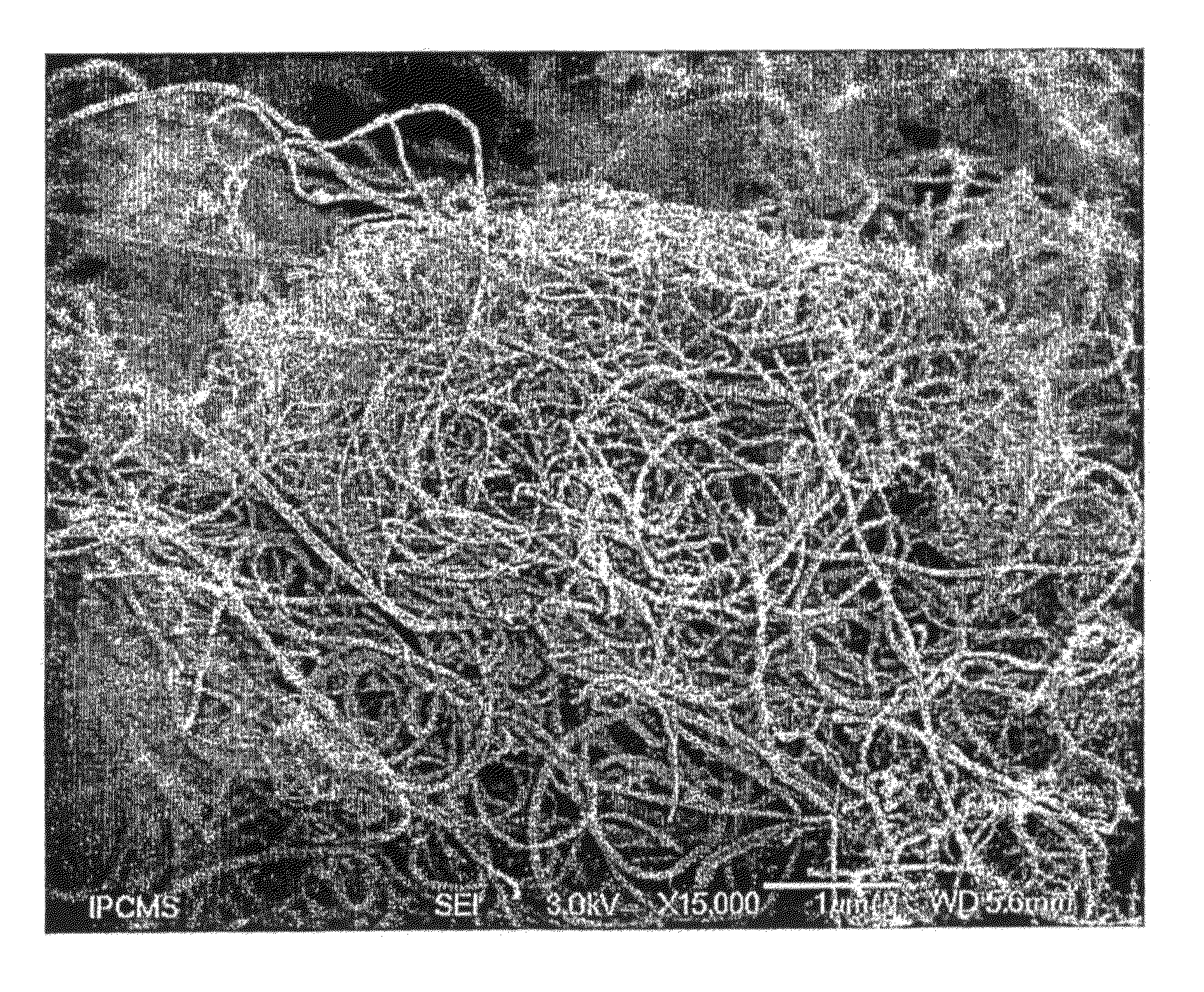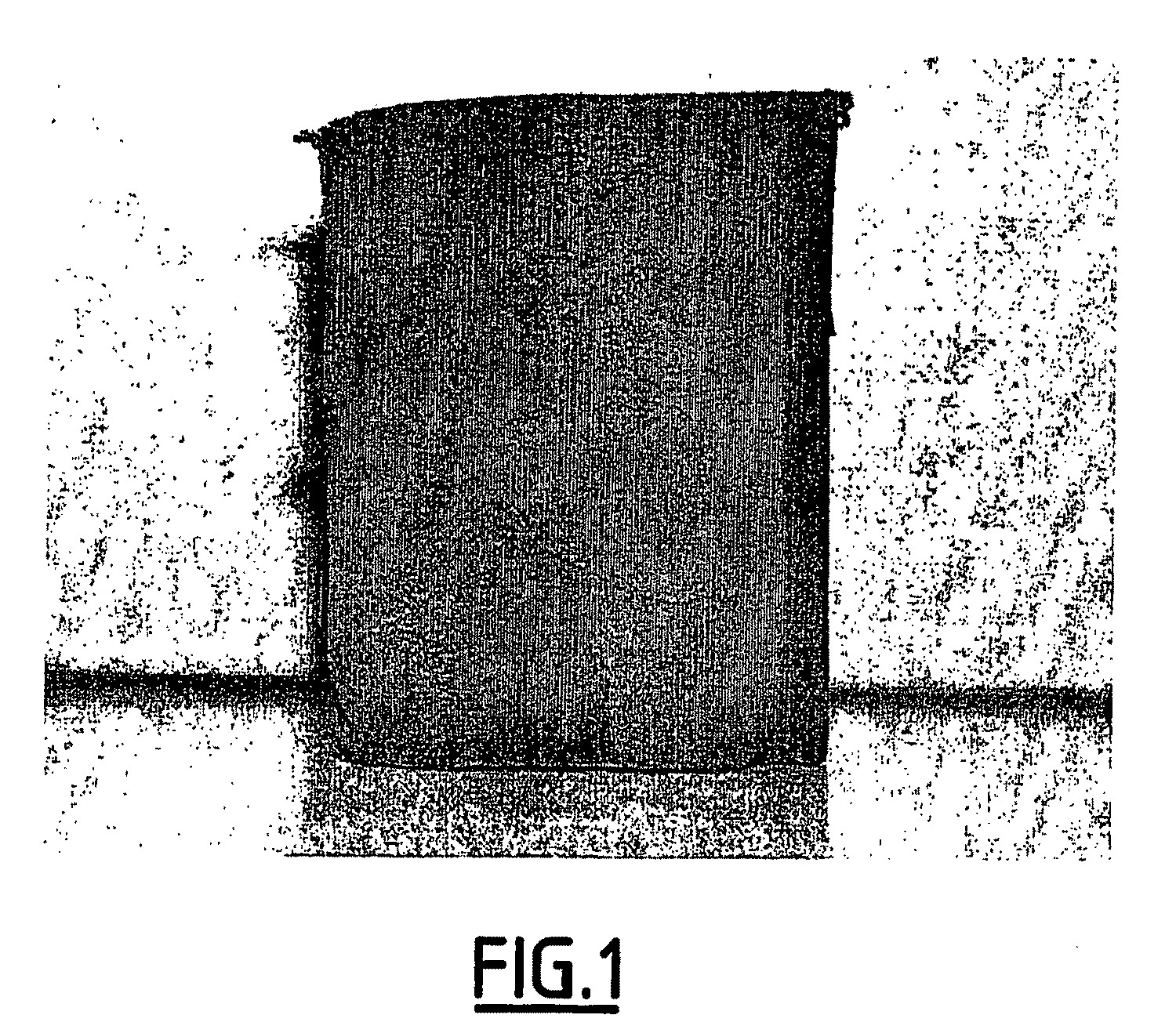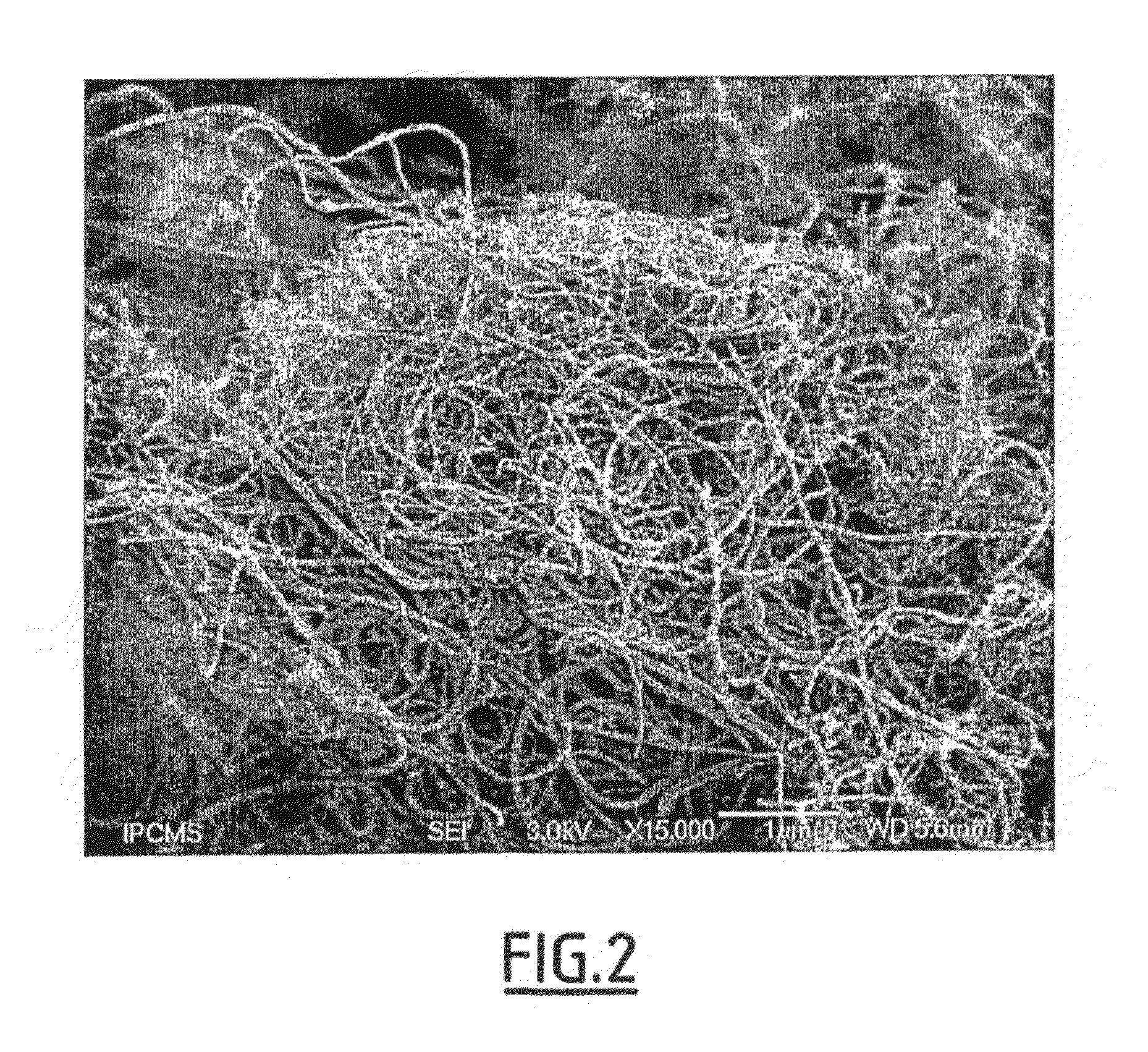Materials based on tangled nanotubes or nanofibres, preparation method thereof and use of same
a technology of nanotubes and nanofibres, which is applied in the field of nanostructured materials based on carbon nanofibres and/or nanotubes, can solve the problems of difficult handling and control, nanofibres have a very strong tendency to dust, and give rise to environmental and safety problems, etc., and achieves the effect of convenient control and handling
- Summary
- Abstract
- Description
- Claims
- Application Information
AI Technical Summary
Benefits of technology
Problems solved by technology
Method used
Image
Examples
example 1
Process for the Preparation of a Material Based on Tangled Nanotubes
1 g of catalyst (alumina powder containing 40% of Fe) was placed in a cylindrical tubular quartz reactor (wall thickness 4 mm, internal diameter 30 mm, length 90 mm).
Carbon felt firmly attached to the reactor by means of iron wire was fitted to each of the two inlets to the cylindrical reactor.
A gaseous flow comprising a mixture of hydrogen and ethane (H2 / C2H6 ratio 2 / 3) was then injected into the reactor with a total flow of 100 mL·min−1, at a temperature of 640° C.
Growth of carbon nanotubes was then observed, and this was allowed to continue until growth took place under the constraint. The reaction was carried out for a total period of 4 hours.
In this way a solid cylindrical block based on tangled nanotubes having the shape of the internal space of the reactor was obtained.
FIGS. 1 and 2 appended hereto are photographs of this material. FIG. 1 shows that macroscopically the material is a single block having the cy...
example 2
Use of a Material Based on Tangled Nanotubes to Extract Organic Species Present in an Aqueous Medium
60 ml of distilled water, then 3 mL of benzene with an added fluorescent yellow dye (4,4-difluoro-1,3,5,7,8-pentamethyl-4-bora-3a,4a-diaza-S-indacene), rendering it visible, were placed in a 100 mL beaker (b1). A layer of yellow-coloured benzene on the surface of the water was obtained in this way.
The solid based on tangled nanotubes obtained in Example 1 was placed in the medium, soaking the solid in the medium. The yellow colour was immediately observed to disappear from sight, showing that the benzene was retained instantaneously.
The solid based on tangled nanotubes was then removed from the aqueous medium and placed in a beaker (b2) containing 60 ml of ethanol. It was then observed that the benzene and dye migrated towards the ethanol, which took on the yellow colour of the dye associated with the benzene.
The solid based on tangled nanotubes from which the benzene had been washed ...
PUM
| Property | Measurement | Unit |
|---|---|---|
| molar ratio | aaaaa | aaaaa |
| molar ratio | aaaaa | aaaaa |
| pressure | aaaaa | aaaaa |
Abstract
Description
Claims
Application Information
 Login to View More
Login to View More - R&D
- Intellectual Property
- Life Sciences
- Materials
- Tech Scout
- Unparalleled Data Quality
- Higher Quality Content
- 60% Fewer Hallucinations
Browse by: Latest US Patents, China's latest patents, Technical Efficacy Thesaurus, Application Domain, Technology Topic, Popular Technical Reports.
© 2025 PatSnap. All rights reserved.Legal|Privacy policy|Modern Slavery Act Transparency Statement|Sitemap|About US| Contact US: help@patsnap.com



